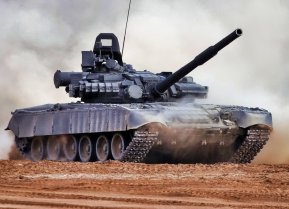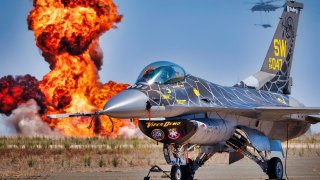Ukraine's 60 New F-16 Fighting Falcons: Can They Make a Difference?
In the upcoming weeks, the Ukrainian Air Force will receive the first F-16 Fighting Falcon fighter jets from the West. But can they make a difference in small numbers?
In the upcoming weeks, the Ukrainian Air Force will receive the first F-16 Fighting Falcon fighter jets from the West.
After months of denials, Denmark, Belgium, Norway, and the Netherlands stepped forward and committed up to 60 F-16 fighter jets to Ukraine. The United States gave the green light for the export, and the United Kingdom stepped in to help train the first Ukrainian pilots.
But is it enough?
Is this relatively small number of aircraft going to make a difference in a large-scale conventional conflict against Russia that can field hundreds of aircraft?
F-16s over Ukraine
The F-16 Fighting Falcon is a multi-role fighter jet capable of both air combat and air-to-ground operations. With the ability to reach 1,500 miles per hour and an operational ceiling of 50,000 feet, the F-16 fighter jet can make a difference on the battlefield based on its agility, sensors, and munitions.
To begin with, there is some confusion about the exact number of F-16s to be delivered to Ukraine.
Overall, the four European countries have committed up to 60 F-16 fighter jets to Ukraine. The exact numbers are sketchy since countries like the Netherlands have committed to sending F-16s to Ukraine but haven’t disclosed if that means their whole fleet of 42 aircraft or a fraction of that number.
However, as with other weapon systems committed to Ukraine, it will take months or even years before some of the aircraft are delivered. Belgium, for example, said that it will only send fighter jets to Ukraine in 2025 when it expects deliveries of F-35 Lighting II stealth aircraft.
Another issue that slows down delivery and operations has to do with linguistics. You see, there aren’t enough Ukrainian pilots and maintainers proficient in English. And since the training manuals and software are in English, the operators must be able to understand them clearly.
But let’s say that tomorrow, Ukraine has 60 F-16 fighter jets ready to go in its hangars. Would that be enough? It depends on what Kyiv is looking to achieve with them.
Suppose the Ukrainian military seeks to imitate U.S. doctrine and establish complete air superiority over the battlefield to enable and support ground operations. In that case, 60 aircraft will have a tough job against the Russian air defenses and fleet of hundreds of fighter jets.
But if the Ukrainian Air Force seeks to use the aircraft to support specific operations, then it has a better chance of success. Kyiv could use its F-16s to steadily dismantle the Russian air defense umbrella around the battlefield to pave the way for more open-air operations. The Fighting Falcon clicks very well with the AGM-88 High-Speed Anti-Radiation Missile (HARM) and can be a powerful combination against Russian air defenses.
Then, used wisely, the 60 F-16s can help the Ukrainian forces achieve temporary air superiority over the battlefield when they need it the most, for example, in the opening hours and days of a large-scale offensive.
The F-16s will undoubtedly upgrade the Ukrainian Air Force’s aging arsenal of Soviet- and Russian-made fighter jets. But whether they make a difference in the conflict largely depends on how the Ukrainians decide to use them.
About the Author
Stavros Atlamazoglou is a seasoned defense journalist specializing in special operations and a Hellenic Army veteran (national service with the 575th Marine Battalion and Army HQ). He holds a BA from Johns Hopkins University and an MA from the Johns Hopkins School of Advanced International Studies (SAIS). His work has been featured in Business Insider, Sandboxx, and SOFREP.


